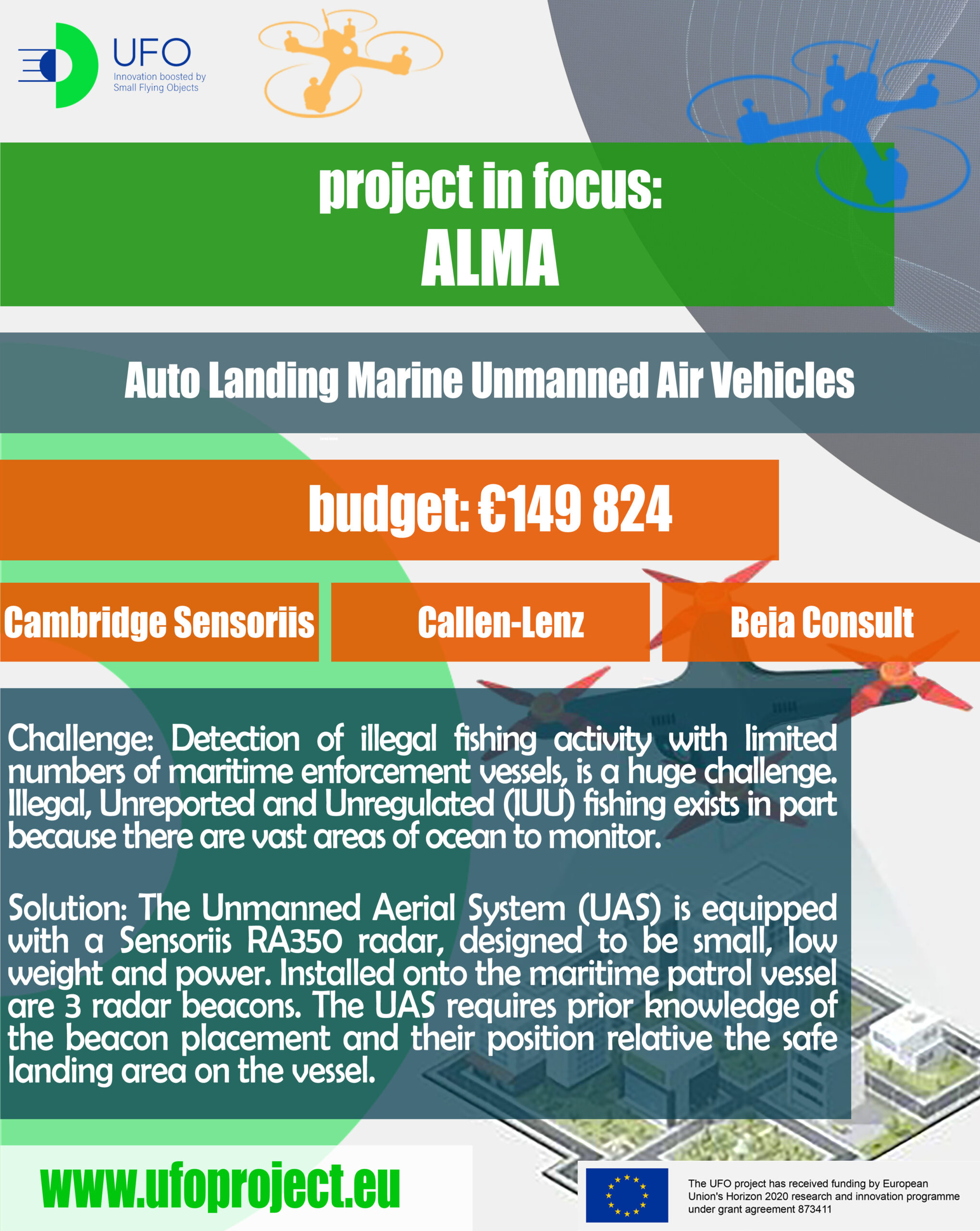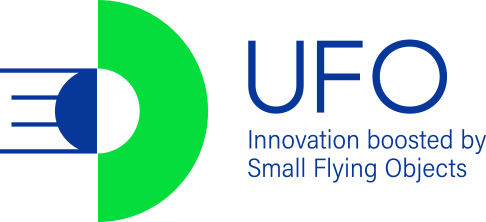ALMA
Auto Landing Marine Unmanned Air Vehicles
Coordinator
Cambridge Sensoriis (UK)
Duration
10 months

Challenge :
Detection of illegal fishing activity with limited numbers of maritime enforcement vessels, is a huge challenge. Illegal, Unreported and Unregulated (IUU) fishing exists in part because there are vast areas of ocean to monitor.
The project consortium includes radar and UAS flight controller technologies from the United Kingdom, and an IoT company, including in the marine sector, with blue growth market linkages, from Romania. This capability has particular relevance to extending the surveillance range of vessels monitoring Illegal, Unlicensed and Unreported fishing, and well as for offshore wind farm inspections and maintenance. The consortium will together integrate small weight and power radar from Cambridge Sensoriis, onto UAV platform with flight controller from Callen-Lenz. Radar measurements of active beacons (Sensoriis) on the vessel provide control inputs, which in turn enable autonomous UAV landing. Beia Consult shall facilitate the demonstration of this capability into offshore marine customers and promote through channel partners. An assessment of the Blue Growth market size for ALMA and go-to market strategy reporting is included.
Short description of the solution :
The Unmanned Aerial System (UAS) is equipped with a Sensoriis RA350 radar, designed to be small, low weight and power. Installed onto the maritime patrol vessel are 3 radar beacons. The UAS requires prior knowledge of the beacon placement and their position relative the safe landing area on the vessel.
The RA350 from Cambridge Sensoriis enables an UAS to detect the beacons, with their Identifier designation, and locations, reported over the local onboard network to the Callen Lenz flight controller. The flight controller algorithms can read these locations and calculate control vectors for the UAS landing maneuver. Furthermore, measurements of beacons during the approach phases on landing can indicate the deck quality for the landing, and whether in heavy sea conditions that landing is safe.
The radar is ideally suited for long range detection performance in all weather conditions and is barely affected. The RA350 supports significant cost saving, and safe autonomous operation of UAS beyond visual line-of-sight of a ground-based operator.
Project objective :
The main objective of the project is to extend the surveillance range of vessels monitoring Illegal, Unlicensed and Unreported fishing, as well as for offshore wind farm inspections and maintenance.
Ship-launched UAS have the potential to greatly extend the surveillance and evidence gathering capability of coastguard vessels and rapidly respond to suspicious or uncooperative vessels detected by ship-borne radar. Video evidence can be captured from the UAS, and the locations and activities of suspect vessels can be reported rapidly to coastguard authorities.
The ALMA technologies shall alleviate the requirement to place skilled (and scarce) UAS pilots into offshore operational roles. We shall automate the critical landing phase of the UAS onto the vessel at the end of its reconnaissance mission, with a combination of intelligent sensing and beacon technologies.
Expected results :
Project outcomes will include determination of the reliability and constraints of the radar automated landing system, through multiple structured UAS landing tests onto a moving platform over land. These shall be onto a towed vehicle trailer fitted with beacons. Once complete, flights will move to landing onto a vessel underway. Limitations of vessel speed, wind and sea state will have been determined during trials.
The constituent project technologies include SWaP UAS radar, active radar beacon, and UAS flight controller. Through this project these shall be integrated. The UAS radar shall measure multiple beacon positions in 3D space, reporting their unique identification code and reliably distinguishing them from other conventional radar measurements of the ship, and sea surface. The flight controller will react to these measurements and provide control outputs to the UAS motors to land the UAS into the defined zone relative to the beacons.
